
Tamil Nadu, is one of the 28 states of India. Its capital and largest city is Chennai. Tamil Nadu lies in the southernmost part of the Indian subcontinent and is bordered by the union territory of Puducherry and the South Indian states of Kerala, Karnataka, and Andhra Pradesh. It is bounded by the Eastern Ghats on the north, by the Nilgiri Mountains, the Meghamalai Hills, and Kerala on the west, by the Bay of Bengal in the east, by the Gulf of Mannar and the Palk Strait on the southeast, and by the Indian Ocean on the south. The state shares a maritime border with the nation of Sri Lanka.

Tea is a city in Lincoln County, South Dakota, United States and is a suburb of Sioux Falls. The population was 3,806 at the 2010 census.

Sioux Falls is the most populous city in the U.S. state of South Dakota and the 140th-most populous city in the United States. It is the county seat of Minnehaha County and also extends into Lincoln County to the south, proximate with the Iowa state line.

Coimbatore, also known as Kovai and Koyamuthur, is a major city in the Indian state of Tamil Nadu. It is located on the banks of the Noyyal River and surrounded by the Western Ghats. Coimbatore is the second largest city in Tamil Nadu after Chennai and the 16th largest urban agglomeration in India. It is administered by the Coimbatore Municipal Corporation and is the administrative capital of Coimbatore district.

Tiruchirappalli, also called Tiruchi or Trichy, is a major tier II city in the Indian state of Tamil Nadu and the administrative headquarters of Tiruchirappalli district. It is the fourth largest city as well as the fourth largest urban agglomeration in the state. Located 322 kilometres (200 mi) south of Chennai and 374 kilometres (232 mi) north of Kanyakumari, Tiruchirappalli sits almost at the geographic centre of the state. The Cauvery Delta begins 16 kilometres (9.9 mi) west of the city where the Kaveri river splits into two, forming the island of Srirangam, which is now incorporated into the Tiruchirappalli City Municipal Corporation. The city occupies an area of 167.23 square kilometres (64.57 sq mi) and had a population of 916,857 in 2011.

Visakhapatnam is the largest city in the Indian state of Andhra Pradesh, serving as headquarters of the Visakhapatnam district. It lies between the Eastern Ghats and the coast of the Bay of Bengal. The city is set to become the executive capital of Andhra Pradesh once a decentralization bill is enacted the Andhra Pradesh Legislative Assembly. It is one of the four smart cities of Andhra Pradesh selected under Smart Cities Mission. It is the most populous city in the state, with a population of 2,035,922 as of 2011, making it the 11th largest city in the country and the fourth most populous in South India. It is also the ninth most populous metropolitan area in India, with a population of 5,018,000. With an output of $43.5.billion, Visakhapatnam is the ninth largest contributor to India's overall gross domestic product as of 2016, and the state headquarters of the Indian Coast Guard.
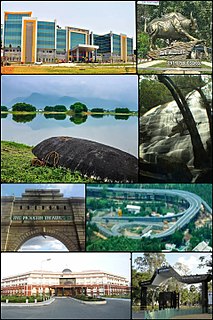
Salem is a city in Salem district in the Indian state of Tamil Nadu. It is located about 160 kilometres (100 mi) northeast of Coimbatore, 186 kilometres (116 mi) southeast of Karnataka state capital Bangalore and about 340 kilometres (210 mi) southwest of the state capital, Chennai. Salem is the Fifth largest city as well as the fifth largest urban agglomeration in the state by population and covers 124 km2 (48 sq mi).

The University of South Dakota (USD) is a public research university in Vermillion, South Dakota. Established by the Dakota Territory legislature in 1862, 27 years before the establishment of the state of South Dakota, USD is the flagship university for the state of South Dakota and the state's oldest public university. It occupies a 274 acres (1.11 km2) campus located in southeastern South Dakota, approximately 63 miles (101 km) southwest of Sioux Falls, 39 miles (63 km) northwest of Sioux City, Iowa, and north of the Missouri River.

Mangalore, officially known as Mangaluru, is the chief port city of the Indian state of Karnataka. It is located between the Arabian Sea and the Western Ghats mountain range about 352 km (219 mi) west of Bangalore, the state capital. Mangalore is the state's only city to have all four modes of transport—air, road, rail and sea. The population of the urban agglomeration was 619,664 according to the 2011 national census of India.

Vijayawada is a city in the Indian state of Andhra Pradesh. It lies on the banks of River Krishna surrounded by the hills of Eastern Ghats known as Indrakeeladri Hills in Krishna District. It geographically lies on the center spot of Andhra Pradesh. The city has been described as the commercial, political, educational and media capital of Andhra Pradesh, also the 42nd largest city in India and is one of the rapidly growing urban areas in India. It is considered to be a sacred place for residing one of the most visited and famous temples of Andhra Pradesh and India, Kanka Durga Temple of Hindu Goddess Durga. It also serves as the ritual host of Pushkaram of River Krishna. Its railway station stands as one of the ten most busiest railway junctions in India. There is a legend which says that Arjuna, one of the heroes of the Indian epic Mahabharata, prayed on top of the Indrakeeladri Hill in the city and won the blessings of Lord Shiva to get the Pashupatastra to win the Kurukshetra War. It was called Vijayavatika when Goddess Durga killed the demon Mahishasura and rested on the Indrakeeladri Hill by the River Krishna establishing the victory over evil hence the place got its name Vijayavatika, "Vijaya"- meaning victory and "Vatika" meaning Place or land in Telugu. Over the years Vijayavatika name changed to Rajendra Chola Pura during Chola Dynasty and Bezawada during British rule and eventually to Vijayawada.
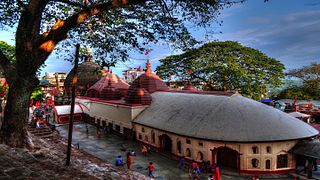
Guwahati is the largest city in the Indian state of Assam and also the largest metropolis in the northeastern India. A major riverine port city along with hills is one of the fastest growing cities in India, Guwahati is situated on the south bank of the Brahmaputra.

Kollampronunciation (help·info), also known by its former name Quilonpronunciation (help·info) and Coulão, is an old seaport and city on the Laccadive Sea coast of the Indian state of Kerala. It is situated 66 kilometers north of the state capital Trivandrum. The city is on the banks of Ashtamudi Lake. Kollam has a strong commercial reputation since the days of the Phoenicians and Romans. Fed by the Chinese trade, it was mentioned by Ibn Battuta in the 14th century as one of the five Indian ports he had seen during the course of his twenty-four-year travels. Desinganadu's rajas exchanged embassies with Chinese rulers while there was a flourishing Chinese settlement at Kollam. In the 9th Century, on his way to Canton, China, Persian merchant Sulaiman al-Tajir found Kollam to be the only port in India visited by huge Chinese junks. Marco Polo, the Venetian traveller, who was in Chinese service under Kublai Khan in 1275, visited Kollam and other towns on the west coast, in his capacity as a Chinese mandarin.
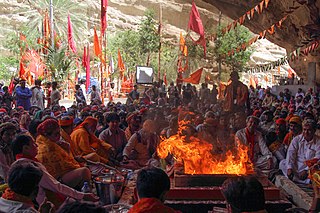
Hinduism is the second largest religion in Pakistan after Islam. Pakistan gained independence from Britain in 1947, and in the first census afterwards in 1951, Hindus made 1.6% of the total population of West Pakistan, and 22% of East Pakistan. Hindus made up 1.85% of Pakistan's population according to the 1998 census - although the Pakistan Hindu Council claims there are around 8 million Hindus living in Pakistan, comprising 4% of the Pakistani population. As of 2010, Pakistan has the fifth-largest Hindu population in the world and by 2050 may rise to the fourth-largest Hindu population in the world, reaching 5.6 million and constituting 2% of the Pakistani population. However, voluntary as well as forced religious conversions have brought down the number of Hindus in Pakistan by up to 1,000 per year.
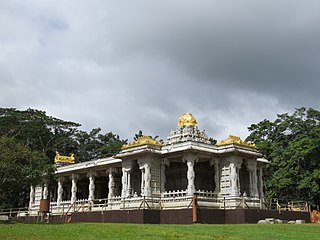
Hinduism is a minority religion in the United States of America, ranking fourth largest, and constituting 0.7% of the population. The vast majority of American Hindus are immigrants from South Asia. There are also Hindus from Singapore, Malaysia, Myanmar, Indonesia, Canada, the Caribbean, Oceania, Africa, Europe, and the Middle East, and other countries and their descendants. Additionally, the United States has no number of converts to Hinduism. There are also about 900 ethnic Cham people from Vietnam, one of the few remaining non-Indic Hindus in the world, living in America, 55% of whom are Hindus.

Nepal has established itself as a travelers and backpacker’s destination, exhibiting its breathtaking landscapes, pristine lakes, and rivers, mighty mountains, diverse cultures and traditions affixed by peace and harmony. Tourism has not only helped with the exchange of culture and traditions, ideas and principles, beliefs and ethics among nations but also has helped Nepal with its financial growth and liberty

Dakota Mayi Johnson is an American actress and model. The daughter of actors Don Johnson and Melanie Griffith, she made her film debut at age ten with a minor appearance in Crazy in Alabama (1999), a dark comedy film starring her mother. Johnson was discouraged from pursuing acting further until she completed high school, after which she began auditioning for roles in Los Angeles.
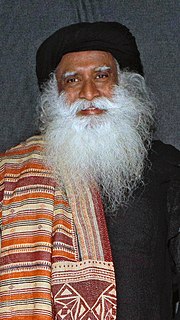
Jaggi Vasudev, generally referred to as Sadhguru, is an Indian yogi and author.

Agasthyarkoodam is a 1,868-metre (6,129 ft)-tall peak of the Pothigai mountain range of Tamil Nadu and Kerala in the Western Ghats of South India. The peak lies on the border of Kerala and Tamil Nadu. This peak is a part of the Agasthyamala Biosphere Reserve which lies on the border between the Indian states of Kerala and Tamil Nadu. The perennial Thamirabarani River originates from the eastern side of the range and flows into the Tirunelveli district of Tamil Nadu.

Kristi Lynn Noem is an American politician serving as the 33rd and current governor of South Dakota since 2019. A member of the Republican Party, she was the U.S. Representative for South Dakota's at-large congressional district from 2011 to 2019 and a member of the South Dakota House of Representatives from 2007 to 2011. Noem was elected governor in 2018 and is South Dakota's first female governor.

The Hindus of the Kashmir Valley, were forced to flee the Kashmir valley as a result of being targeted by JKLF and Islamist insurgents during late 1989 and early 1990. Of the approximately 300,000 to 600,000 Hindus living in the Kashmir Valley in 1990 only 2,000–3,000 remain there in 2016. 19 January 1990 is widely remembered by Kashmiri Hindus as the tragic "exodus day" of being forced out of Kashmir.





















